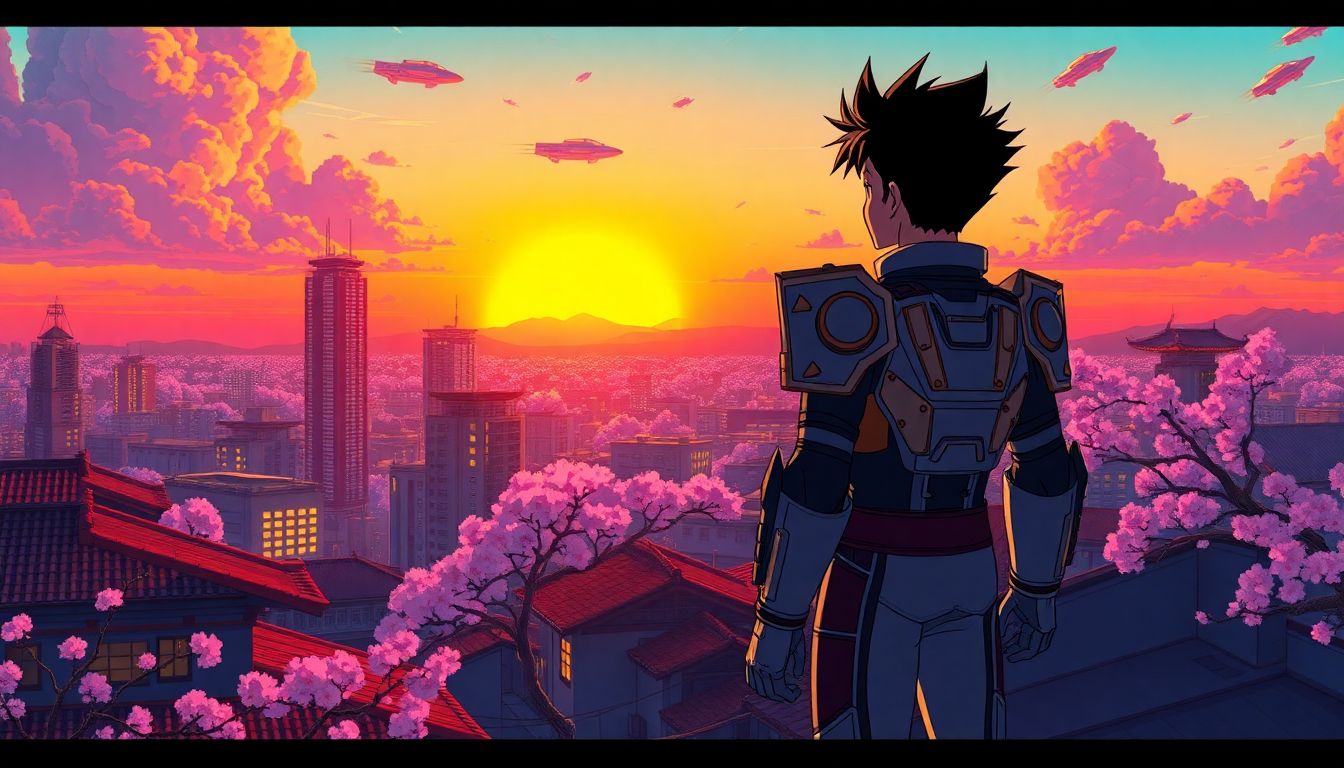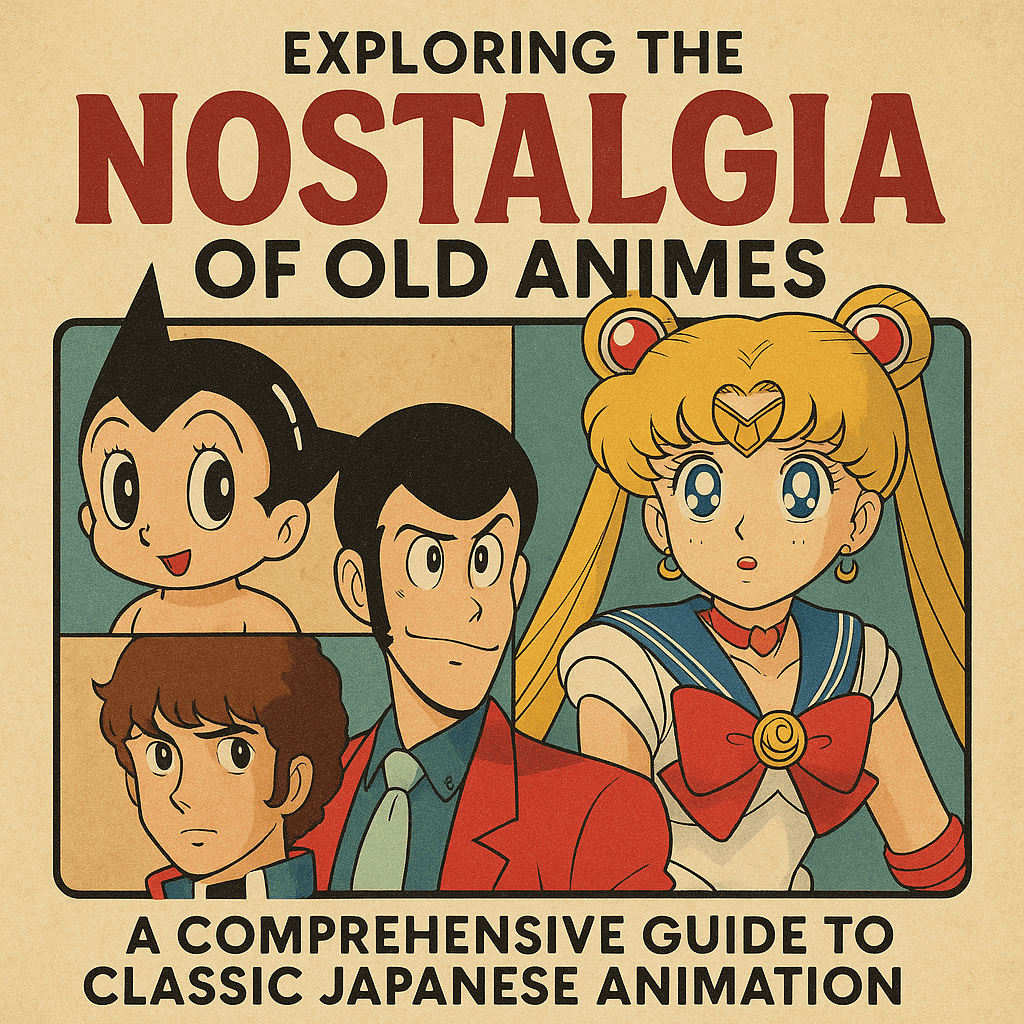Introduction
Old anime holds a special place in the hearts of fans around the world. These shows and movies shaped the culture of anime and inspired countless creators. They’re more than just entertainment—they’re a window into Japan’s history and artistic evolution. From iconic characters to unforgettable stories, classic anime continues to influence modern animation and fandoms. This article dives into the roots of anime, highlights must-watch titles, and shares tips on how to enjoy these treasures today.
The Evolution of Anime: A Brief Historical Perspective
Origins of Anime in Japan
Anime as we know it started with early 20th-century experiments and animations from Japan. Pioneers like Osamu Tezuka played a huge role in setting the foundation for the art form. His work, including Astro Boy, introduced many storytelling techniques still used today. These early efforts combined Western animation influence with Japanese storytelling traditions, creating the unique style that defines anime.
The Rise of the Golden Age (1970s-1980s)
The 70s and 80s are often called the "Golden Age" of anime. This era saw the rise of massive hits like Mobile Suit Gundam, which introduced complex mecha battles and broader storylines. Films like Akira changed the game with their stunning animation and mature themes. During this period, technological advancements led to better visuals and richer stories, making anime more engaging than ever.
Transition into the Modern Era
From the 1990s onward, anime evolved again. The art style softened, and themes ranged from dark psychological stories to lighthearted adventures. Series like Neon Genesis Evangelion and Sailor Moon gained international fame. This era laid the groundwork for current anime, blending nostalgia with fresh ideas that still influence today’s creators.
Iconic Old Anime Titles and Their Cultural Impact
Classic Series That Shaped Genre
Some anime titles are true classics that changed everything. Neon Genesis Evangelion challenged viewers with its deep psychological themes. Cowboy Bebop brought a jazzy, stylish vibe that still feels fresh. And Sailor Moon helped popularize magical girl anime worldwide. These shows set standards for storytelling, animation, and character development.
Influential Films That Remain Timeless
Certain movies have become legendary. Akira remains a masterpiece of animation and storytelling. Princess Mononoke wowed audiences with its detailed art and environmental message. My Neighbor Totoro is a heartwarming film that defines childhood wonder. These films earned their status because they continue to inspire filmmakers and animators today.
Obscure Gems Worth Rediscovering
Many lesser-known titles deserve attention too. The Secret of Blue Water is a hidden gem with a fantastic adventure story. It pushed animation boundaries in its time and influenced later series. Finding these rarer titles can show you a different side of old anime—less polished maybe, but equally memorable.
Why Old Anime Still Resonates Today
Artistic Style and Storytelling
Old anime often uses unique visual styles that feel different from today’s slick CGI. The storytelling often tackles big themes—adventure, friendship, morality, and existential questions. These stories feel real because they focus on characters’ emotions and struggles, making old anime resonate with viewers even decades later.
Nostalgia and Fandom Culture
Nostalgia plays a big role in why old anime remains popular. Fans love remembering their childhood favorites, sharing stories at conventions, and dressing up as favorite characters. These traditions create a community that keeps old titles alive and thriving.
Influence on Modern Animation and Media
Many modern creators openly credit classic anime as inspirations. Films and series borrow themes, visuals, and storytelling techniques. Whether it’s Attack on Titan's intense drama or The Mandalorian's storytelling style, old anime impacts today’s media in big ways.
How to Access and Enjoy Old Anime
Streaming Platforms and Digital Archives
Getting old anime has never been easier. Platforms like Crunchyroll, RetroCrush, and official streaming channels host a wide range of classics. Some titles are officially subtitled, while fan-sub versions are also common. Make sure to choose licensed versions to support creators.
Recommended Viewing Order for Beginners
If you’re new, start with accessible classics like Dragon Ball, Sailor Moon, or Neon Genesis Evangelion. Watching in historical order can help you see how anime style and storytelling changed over time. Keeping an open mind about the era’s animation quality makes the process more fun.
Collecting and Preserving Old Anime
Some fans like collecting VHS and DVD sets of vintage titles. These physical copies can be rare and valuable. Plus, having a digital backup ensures you’ll enjoy these anime for years to come. Supporting licensing also helps keep these titles available for future generations.
The Future of Classic Anime Preservation and Revival
Efforts in Restoration and Remastering
Many studios now work on remastering old titles. Recent releases have breathed new life into classics, with better picture quality and sound. Museums and cultural groups are also preserving anime history to ensure it’s never lost.
The Role of Fandom in Keeping Old Anime Alive
Online communities thrive on sharing fan translations, reviews, and cosplay of old titles. Conventions often feature panels dedicated to classic anime. Supporting licensing is key—by buying official releases, fans ensure these works stay accessible.
Conclusion
Old anime is a treasure trove of artistic achievement and storytelling that still influences media today. These classics remind us of the roots of animation and continue to inspire new generations. Whether you're a longtime fan or just starting out, exploring vintage titles offers a glimpse into anime’s rich history. Dive into these stories, support efforts to preserve them, and appreciate the artistry that made anime a global phenomenon.



Comments ()